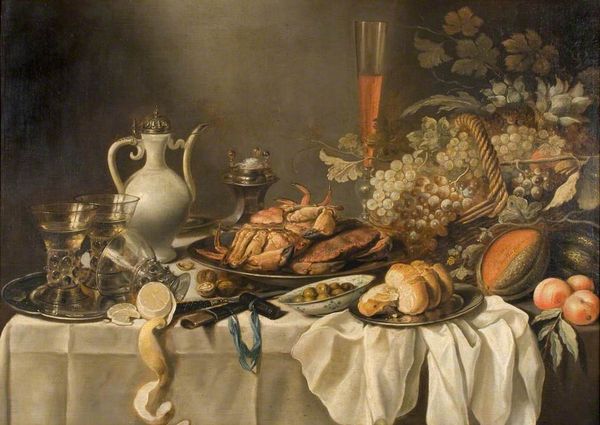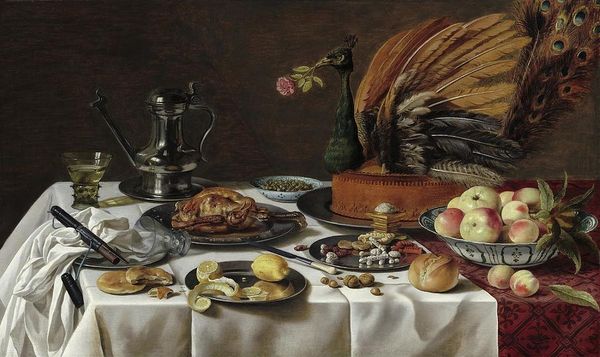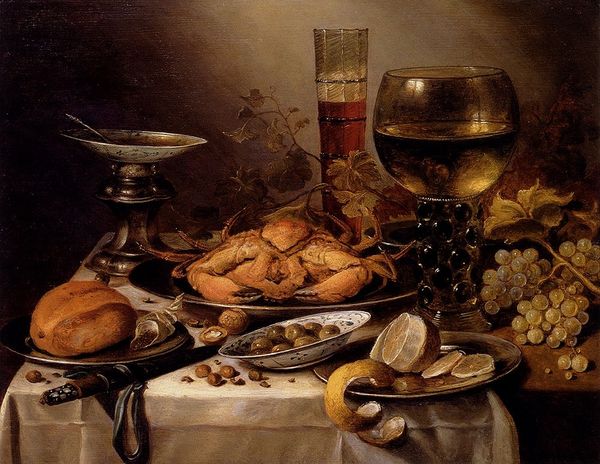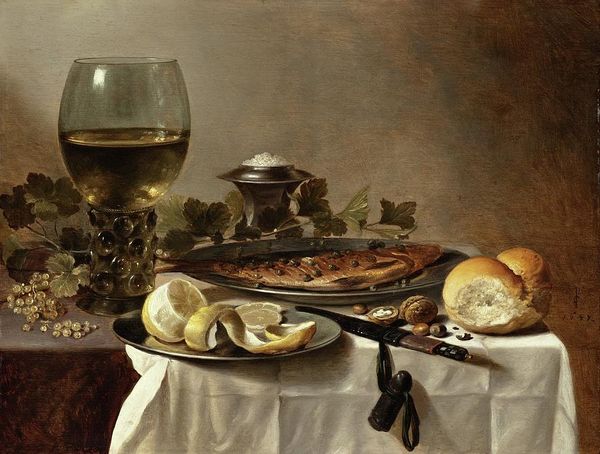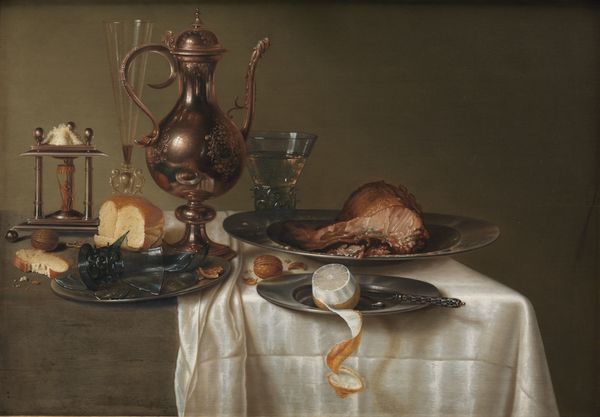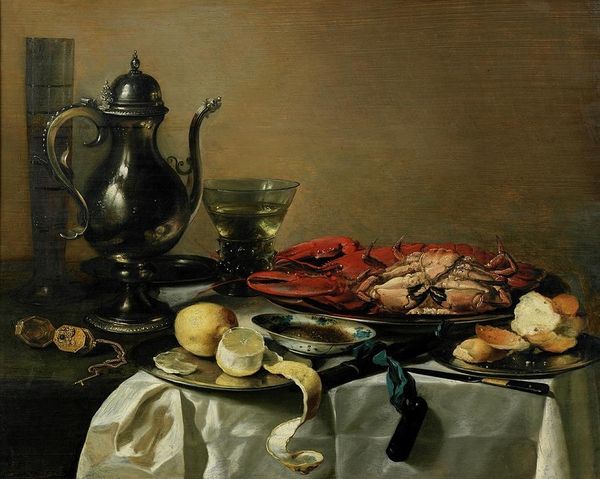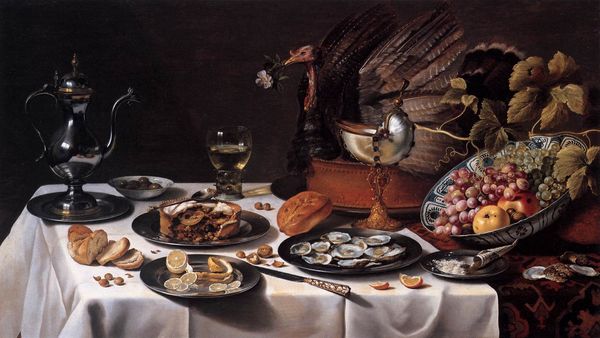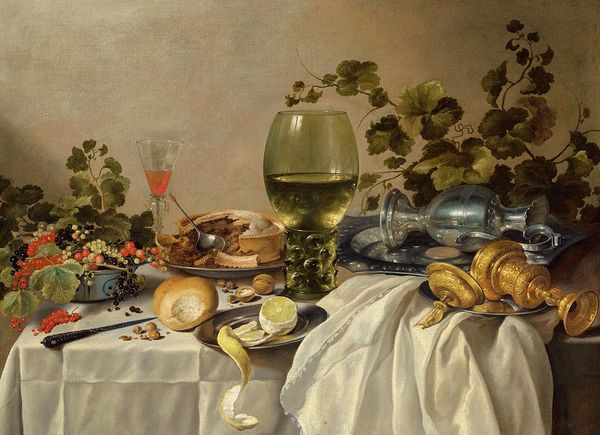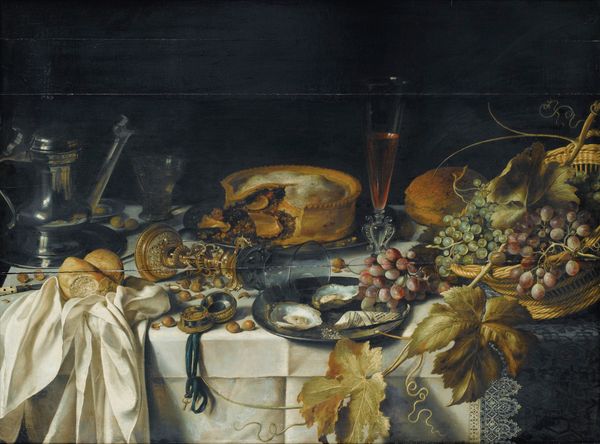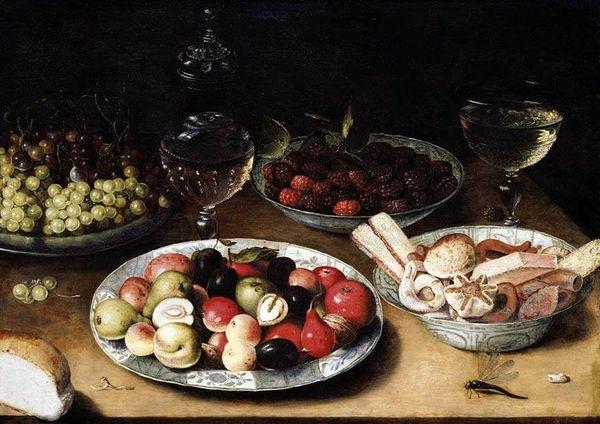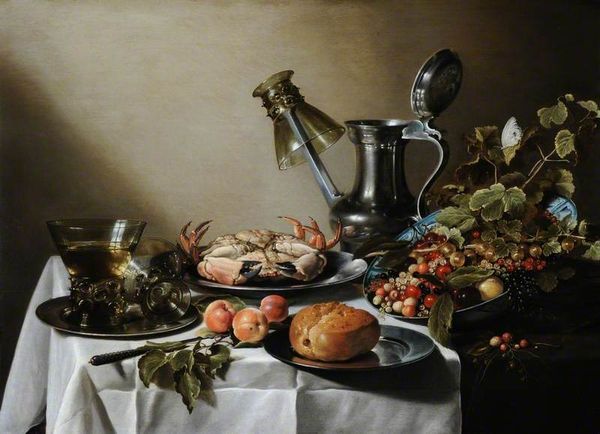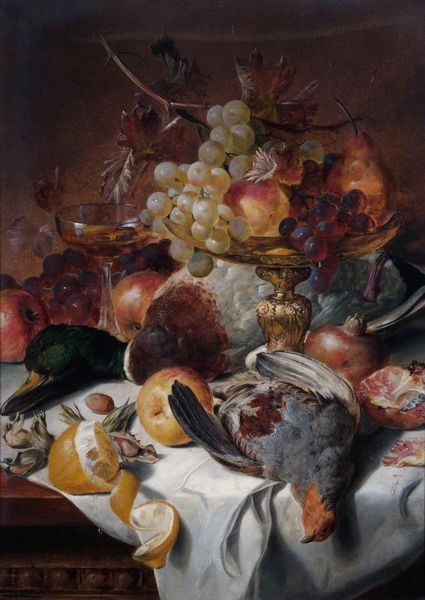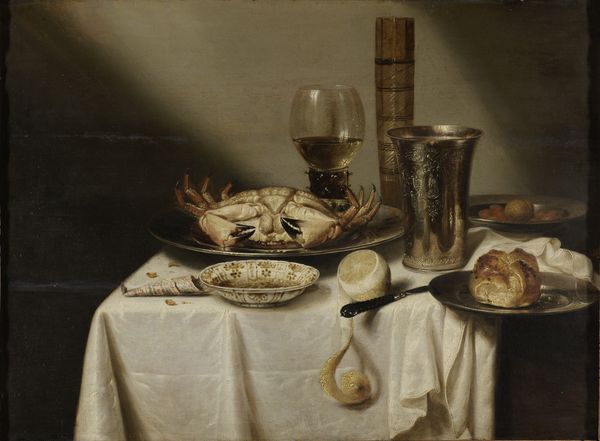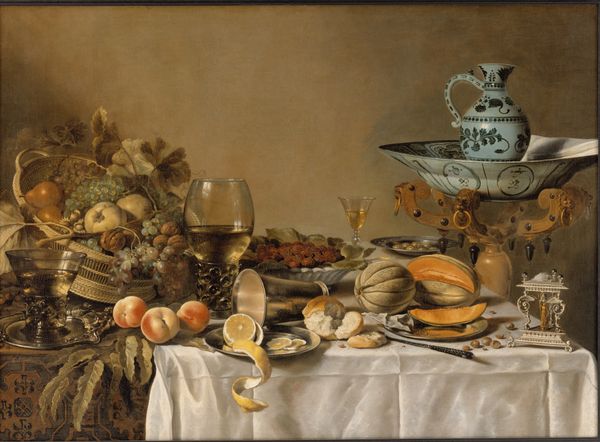
oil-paint
#
baroque
#
dutch-golden-age
#
oil-paint
#
oil painting
#
realism
Copyright: Public domain
Editor: Right, let’s dive into this one. It’s entitled "Still Life of a Roemer, An Earthenware Jug, An Overturned Pieter Claesz". We're unsure when Pieter Claesz actually produced this work, and it is painted in oils. There's just something so rich and satisfying in the detail – especially that haphazard pile of food! What stands out to you about it? Curator: Oh, that satisfying 'pile,' as you call it, speaks volumes. It’s Dutch Golden Age, after all, and nothing is accidental! For me, it’s the 'overturned' part of the title that is essential. What does the position of the overturned wine glass make *you* feel? Editor: It feels... slightly melancholic, almost? Like the party's over, a little bit messy. It makes the image so different from more formal still lifes. But there’s so much there, why highlight just the *overturned* wineglass? Curator: Precisely! It is more than a picture of lunch; it's a moment frozen in time. The overturned glass, the half-eaten pie, the lemon peel artfully dangling... they all speak of vanitas – the transience of earthly pleasures, a common theme in Dutch art of that era. Don't you feel like you were meant to walk into this image 400 years ago? Editor: Okay, now I see it. It’s not just what’s *in* the painting but also what it’s saying. That’s interesting that something seemingly standard becomes complex through the cultural significance it offers. Curator: Precisely! This painting is also a feast of textures, light and shadow too. It’s a small story about life, fleeting beauty and quiet reminders all bundled up in a single moment, don’t you think? Editor: It does. I see that, a lot better, now. The personal reflection is now far more poignant.
Comments
No comments
Be the first to comment and join the conversation on the ultimate creative platform.
